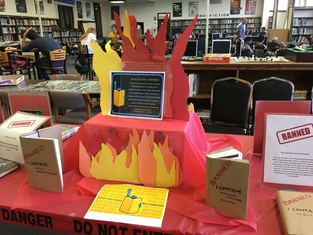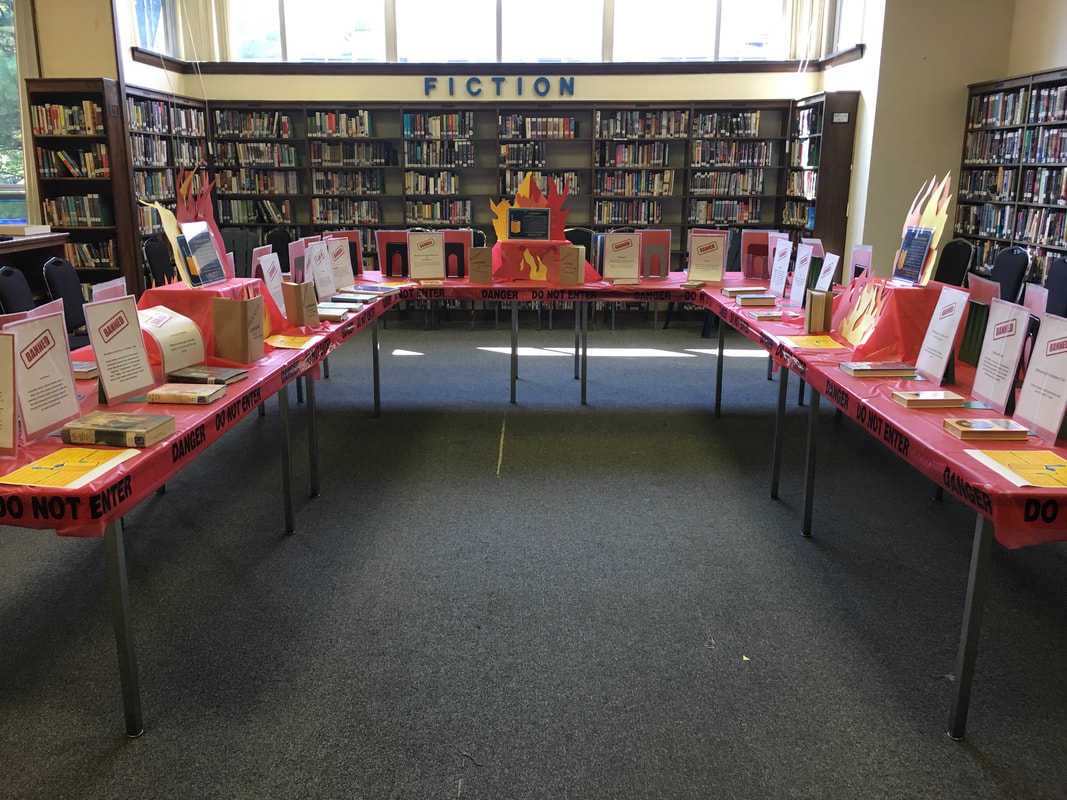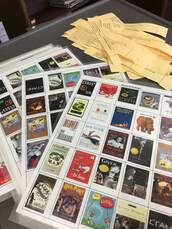| Allison Connelly, Librarian Stoneham High School Library I thought I’d share my experience from this past fall on the expansion of our yearly banned book week display to include an activity. We've been doing banned book displays for several years, and have invited teachers to bring their classes down to the library to take a look, but we’d never had a request to teach a class on banned books. I assumed no one had time with their jammed packed High School English curriculum to do it. |
After a brief introductory explanation on what Banned Book Week is, why it's important and how we handle a challenged book here at school, students were given a few minutes to walk around and look at the displayed books. They were then asked to return to their seats and form teams at each table. Each team got a laminated bingo card with the covers of banned books (each card is slightly different) and a set of small cut up pieces of paper for bingo markers. I then picked a paper on which I had written a brief description of a banned/challenged book and an explanation of why it was challenged or banned from a basket. Students had a minute or two to guess the title, and I added more hints if needed. Once they knew the title, they looked at their bingo sheet to see if they had the book cover on their bingo sheet. If they did, they placed a maker on that cover. The first team to get a row of banned books wins a goofy bookmark for each member.






